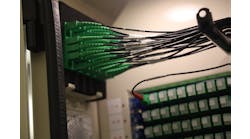Customers are recognizing that there’s a much bigger concept around resiliency than their own bottom line or top line, said Brian Kane, head of enterprise sales engineering for Bloom Energy. Kane spoke with Elisa Wood, editor-in-chief of Microgrid Knowledge, as part of the Microgrid 2021 Executive Interview Series.
“The most significant trend I’ve seen is the desire to actually support the community with the resources that a private entity can bring to bear on their site above and beyond their normal business support,” he said.
The microgrid, he said, can be a “community lighthouse” that serves community members during power outages.
Many companies are initially drawn to microgrids for resiliency. As storms, wildfires and other events occur, companies are recognizing the risks to their power and power quality. They see that their existing power system isn’t supporting their business needs.
Sustainability goals are also important to potential microgrid adopters. More and more, they’re realizing that microgrids can be cost competitive and can allow them to meet sustainability goals into the future.
“They can actually create a road map to the future that further improves their sustainability,” said Kane.
Resiliency + cost savings = new microgrids
While microgrid customers are beginning to grasp these microgrid benefits, they often believe that reliability comes at a high cost.
During the final two days of Microgrid 2021, June 1 and 3, dive into the humanitarian benefits of microgrids and the latest technologies. Register now and watch all past sessions free of charge only through June 3.
The truth is, a number of additional resources have become available that provide both resiliency and cost savings in microgrid projects. They include energy-as-a-service contracts under which the buyer pays no upfront costs. And microgrid buyers can partner with the utility to earn income by offering grid services. Under these scenarios, microgrids can be competitive with the utility power customers are using today.
Along with believing microgrids are too costly, customers also think microgrids are too complex.
To address these ideas about complexity, microgrid providers can present microgrids as resources that are “always on,” which simplifies how customers see the technology and gives them a big picture view. This allows them to see a microgrid as a predictable resource that is always available. But, just as important, the microgrid can transition to a reliability solution when the grid isn’t available. That makes it even more reliable than the grid.
New fuels
It’s also important for customers to understand that microgrids are not backup generators. Microgrids include resources such as solar and storage that can provide cost predictability as well as resiliency. These resources can be very competitive with customers’ current costs.
While some customers are grappling with ideas about high costs, complexity and backup generators, some are becoming more aware of the move to renewable and alternative fuels in microgrids. In the past, potential customers often thought that fossil fuels were the only generation sources that were 100% reliable. Then solar became more cost effective, providing a predictable fuel cost. Adding energy storage increased the resiliency of microgrids by allowing for the storage of solar when the sun isn’t shining.
Bloom Energy microgrid installed for SoCalGas. Photo courtesy of Bloom
And more and more, new technologies such as fuel cells are becoming more cost competitive. Fuel cells can allow microgrids to island from the grid during outages for up to 15 days.
For example, Southern California Gas (SoCalGas) is operating microgrids at two facilities in Southern California using Bloom Energy solid oxide fuel cells. The fuel cells in the microgrids will reduce greenhouse gas emissions, cut air pollution and drop power costs while boosting reliability, according to Bloom.
While SoCalGas uses solar at six of its 113 facilities, the company decided to add fuel cells at its Monterey Park and Pico Rivera facilities because of the technology’s resiliency. The 950-kV Bloom Energy Servers will meet about 90% of the electricity needs at those sites.
“It’s our view that microgrids are able to deliver a predictable, highly reliable, resilient resource that’s always on in partnership with the grid, as opposed to having alternative standby resources or intermittent resources. It’s a foundation that’s as reliable, if not more reliable, than the grid,” said Kane.
Join us at Microgrid 2021: The World Awakens to Microgrids for more insight into how the technology serves as “community lighthouses.”









